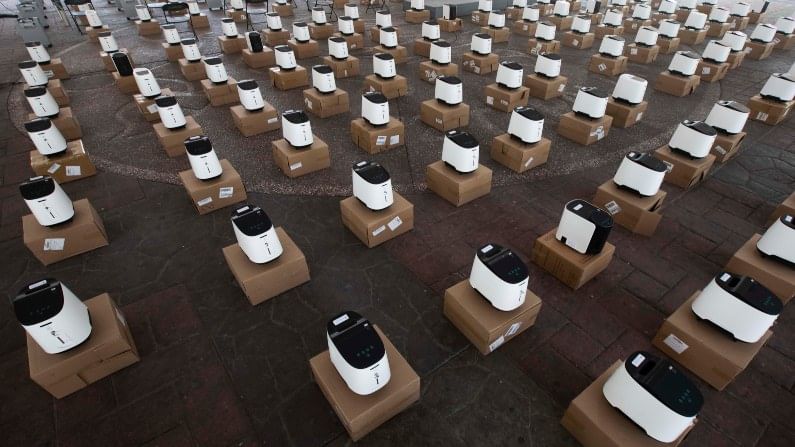Oxygen concentrators: Oxygen-at-home can be a life saver
Oxygen concentrators (also known as oxygen generators) are machines that pull room air via a series of filters to eliminate dust, bacteria, and other contaminants

The oxygen concentrator is an effective supply source for in-home oxygen therapy (HO). Amid oxygen shortage in the country, the oxygen concentrator is drawing attention.
Low oxygen levels are one of Covid-19’s side effects, and many patients need oxygen therapy to recover. Doctors are prescribing oxygen concentrators to many patients because oxygen beds are scarce and suppliers are having difficulty providing oxygen cylinders on demand.
It is a portable medical device that delivers oxygen to people who have breathing problems. It filters the ambient air before compressing it to the required density and then delivers purified medical-grade oxygen to the patient.
Uttar Pradesh Chief Minister Yogi Adityanath has also directed the Health Department to provide oxygen concentrators to districts with a higher number of Covid-19 cases.
A study of the concentrator HO highlights that the effectiveness improved with routine concentrator controls or with the implementation of devices that warn the patient when the percentage of oxygen in the exit gas drops.
How do they work?
Oxygen concentrators are a safe way to get oxygen-rich air. Oxygen concentrators (also known as oxygen generators) are machines that pull room air via a series of filters to eliminate dust, bacteria, and other contaminants.
The machine pushes air into one of two cylinders containing molecular sieve material or semi-permeable membranes in the first stage of the concentration process, where nitrogen is absorbed, leaving concentrated oxygen (90 percent or higher) and a small percentage of other gases present in room air.
Nitrogen is desorbed and pulled out of the atmosphere in the other cylinder at the same time. The cylinders’ role is reversed in a timed period in the second stage, providing a continuous flow of oxygen to the patient. A standard oxygen concentrator can produce oxygen flows of 0.5–5 L·min−1 (low-flow oxygen concentrators), with some models capable of producing up to 10 L·min−1 (high-flow oxygen concentrators).
Advantages
Oxygen concentrators do not need to be refilled. The concentrators run on electrical power and thus supply an unlimited amount of oxygen. Portable concentrators can be used in an “on-the-go” mode with a battery pack, resulting in up to 12 h of continuous use for some models. From a long-term view, concentrators are more cost-effective than compressed gas cylinders.
The Council of Scientific and Industrial Research has also developed an oxygen enrichment technology by one of its laboratories to meet the oxygen demand and minimise the supply chain problem of transportation and storage risks related to oxygen cylinders amid the COVID-19 outbreak.